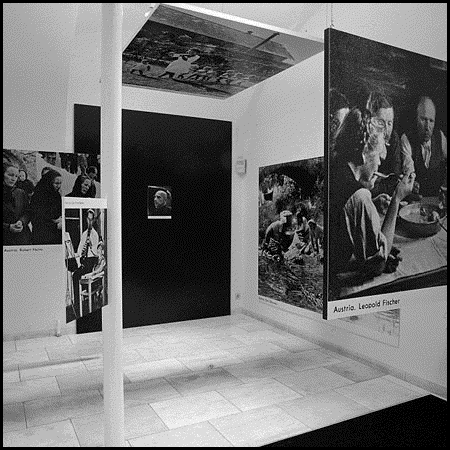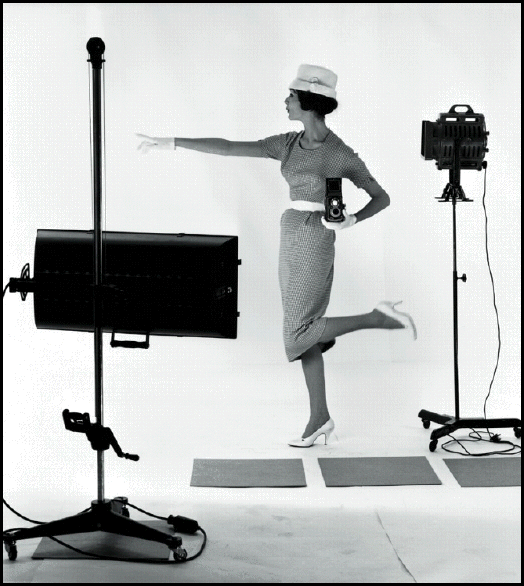Picture for Women
David Campany
(Afterall Books)

But years ago we had all seen super-sized photographs hung in windows of movie theatres ... Clark Gable as big as a dream, for example. Even more typically, we had been exposed to all-too handsome men and all-too exotic women in beautiful clothes hung up for display in the windows of Macys or Sears or your local department store (back when Macys or Sears or your local department stores had windows).
Such pictures --- what they now call "life scale" --- had also appeared in galleries before. There was Russian designer El Lissitzky's Pressa in Cologne, in 1928. Then, a year later, "Film und Foto," staged with over 1,200 films and photographs in Stuttgart, organized by László Moholy-Nagy.

After this, according to Campany, these images of "collective utopia" came to an end "as a result of the emergence of television and the consolidation of the conflicting ideologies of the Cold War." With Jeff Wall's 1976 exhibit, "Faking Death," the megaphotograph returned, this time as Art.
"Faking Death" consisted of a triptych of photographs of the artist, naked, "posing in what the title leads us to suppose are his death throes." These consisted of three backlit transparencies, each 213 meters wide by 213 meters long (almost seven feet by seven feet.)

Wall showed four of his early works in the Art Gallery of Greater Victoria in 1979, which included "Faking Death," "The Destroyed Room," and "Picture for Women." The latter is 142.5 cm by 204.5 cm ... almost 4-1/3 feet by 7 feet.
Campany compares Wall's "Picture for Women" with Manet's "Un Bar aux Folies Bergère," Les Friedlander's "New Orleans, 1968," and a photo by Richard Avedon, "Penelope Tree." Campany obviously feels strongly enough about Wall's works to dedicate this entire 125 page volume to him and "Picture for Women" ... discussing at length its relation to Manet and Avedon, to the concept of the "tableau," along with its "restless passivity," and the "status of direct address," and its "frontal tripartite structure."
There is too much discussion of the camera in the center of the picture, the reverse image of the camera's trade name, the dividing line down the middle, the naked bulbs hanging above, the gaze of the anonymous woman, the empty chairs, and Wall's mysterious role in this mysterious tableau.
One of the problems for this reader and Campany's concept of art is that the picture as reproduced in this book cannot possibly have the same effect as it would if we were seeing it for the first time in the Art Gallery of Greater Victoria. In its original setting we --- as the juveniles would have it --- might be blown away by. In the context of the studio setting, it might be, indeed, overwhelming.
In this small volume, the picture is definitely underwhelming. It might even be underwhelming no matter its size or its backlighting or its place on the gallery walls.
